Editor’s Note: Brent Glass is Director Emeritus of the Smithsonian’s National Museum of American History and the author of 50 Great American Places: Essential Historic Sites Across the U.S.
1960s
Editor’s Note: Stephen Coonts is a Vietnam veteran and the author of over 40 books of fiction and non-fiction including the bestselling Flight of the Intruder. Barrett Tillman has also authored over 40 books, mostly on naval and aviation topics, including On Yankee Station.

Slow Moving Vehicle (SMV) Emblem Makes Significant Contributions To Agricultural And Highway Safety Worldwide. 1961- 63 Developed By Kenneth A. Harkness, Department Of Agricultural Engineering On The Ohio State University Campus. 1964 Became An ASAE Standard 1968 Specified In National Uniform Vehicle Code 1971 First Asabe Standard Ratified By American National Standards Institute (ANSI). Became Occupation Safety And Health Act (OSHA) Regulation. Ohio Farm And Home Safety Committee Provided Leadership
In Achieving Acceptance Dedicated 1992
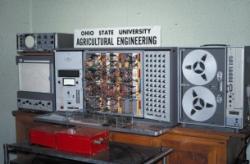
The first laser grade control was developed by agricultural engineers James Fouss and Norman Fausey of USDA's Agricultural Research Service at The Ohio State University in the mid-1960's. That system controlled the precise depth and grade of subsurface drains by regulating trenching and plow-type drainage machines. Photo cells mounted on the drainage machine automatically raised and lowered the digging device, keeping the cells centered on a laser beam set to the desired elevation and grade.
matic grade‐control system on the plow.
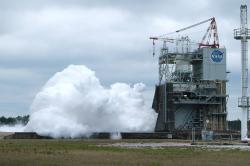
This rocket propulsion test complex was created to flight-certify all first and second stages of the Apollo Saturn V rocket. The first test-firing occurred on April 23, 1966. Subsequent to the Apollo Program, these test stands were modified to support the testing requirements of the Space Shuttle Main Engine. Every astronaut who traveled to the moon aboard Saturn V Rockets and into space aboard the Space Shuttle, did so on rocket stages and engines that were first proven flight-worthy on these test stands.
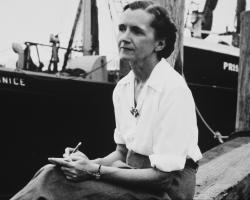
Rachel Carson’s Silent Spring, published in 1962, was a landmark in the development of the modern environmental movement. Carson’s scientific perspective and rigor created a work of substantial depth and credibility that sparked widespread debate within the scientific community and the broader public about the effect of pesticides on the natural world. These discussions led to new policies that protect our air, our water, and, ultimately, our health and safety.
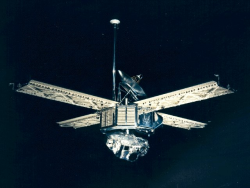
As much as we know today about the planets of the solar system, it’s almost incomprehensible that a mere 50 years ago we knew almost nothing about them. Observations of even Mars and Venus, Earth’s closest planetary neighbors, through Earth-based telescopes had provided only the most rudimentary information on their physical characteristics and essentially no information on the chemical properties of the planets and their atmospheres.
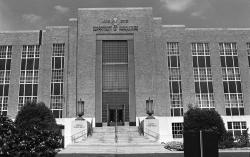
By the 1950s, synthetic fabrics - often wrinkle resistant and flame retardant - began to overtake cotton as the dominant U.S. textile fiber. To reverse this trend chemists and chemical engineers at the Southern Regional Research Center initiated research to modify cotton chemically. Their efforts in developing agents that crosslinked the cellulose fibers and in establishing crosslinking mechanisms led to improved durable press fabrics. SRRC studies also developed new agents that improved the durability of flame retardant cotton to laundering.
In the mid-1960s Don Bitzer, the director of the Coordinated Science Laboratory at the University of Illinois at Urbana–Champaign, was tasked with creating the first computer-based instructional system. He recognized immediately that current screen technology would support such a program. A new, brighter display was needed, one that had no flicker and boasted higher contrast than what was then available on screens using cathode ray tubes.
During World War II, South Carolina–born Charles Townes worked on nascent microwave technology and designed radar-based bombing systems for Bell Labs. After hostilities ended, he accepted a position at Columbia University. One spring morning in 1951 he experienced a eureka moment when he realized he could generate microwaves with molecules instead of free electrons.
Innovations
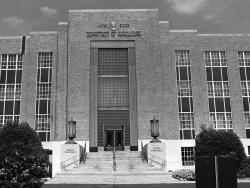
By the 1950s, synthetic fabrics - often wrinkle resistant and flame retardant - began to overtake cotton as the dominant U.S. textile fiber. To reverse this trend chemists and chemical engineers at the Southern Regional Research Center initiated research to modify cotton chemically. Their…
Read More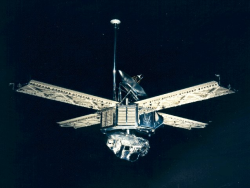
As much as we know today about the planets of the solar system, it’s almost incomprehensible that a mere 50 years ago we knew almost nothing about them. Observations of even Mars and Venus, Earth’s closest planetary neighbors, through Earth-based telescopes had provided only the most rudimentary…
Read More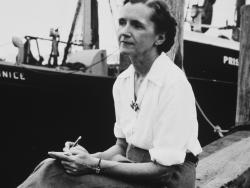
Rachel Carson’s Silent Spring, published in 1962, was a landmark in the development of the modern environmental movement. Carson’s scientific perspective and rigor created a work of substantial depth and credibility that sparked widespread debate within the scientific community and the…
Read More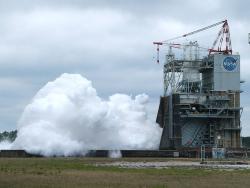
This rocket propulsion test complex was created to flight-certify all first and second stages of the Apollo Saturn V rocket. The first test-firing occurred on April 23, 1966. Subsequent to the Apollo Program, these test stands were modified to support the testing requirements of the…
Read More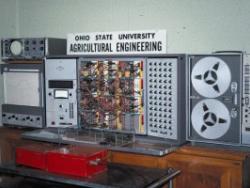
The first laser grade control was developed by agricultural engineers James Fouss and Norman Fausey of USDA's Agricultural Research Service at The Ohio State University in the mid-1960's. That system controlled the precise depth and grade of subsurface drains by regulating trenching and…
Read More
Slow Moving Vehicle (SMV) Emblem Makes Significant Contributions To Agricultural And Highway Safety Worldwide. 1961- 63 Developed By Kenneth A. Harkness, Department Of Agricultural Engineering On The Ohio State University Campus. 1964 Became An ASAE Standard 1968 Specified In National…
Read More

